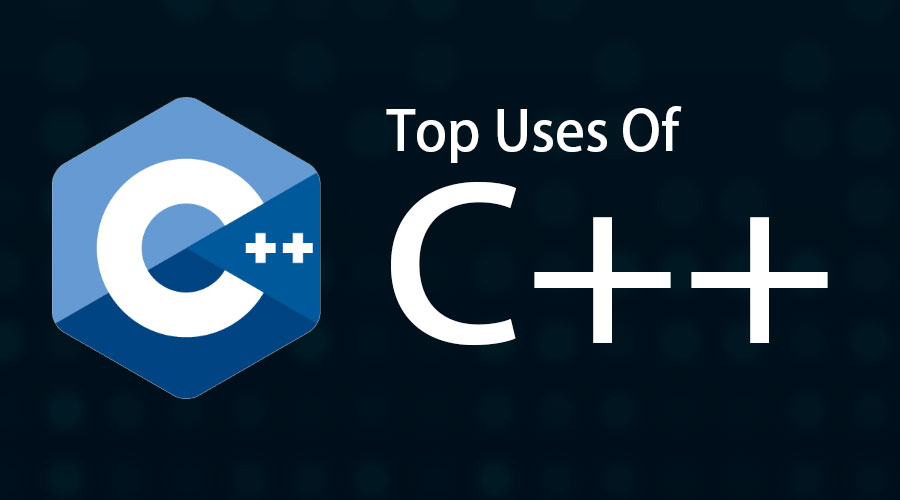Welcome to the world of C++ programming, where you can unleash your creativity and build powerful software! If you’re a beginner, don’t worry; we’re here to guide you through the basics of C++ in an easy-to-understand manner.
Why Learn C++?
C++ is a versatile programming language with a rich history and numerous applications. It’s widely used in game development, system programming, and even in creating software for embedded systems. Learning C++ opens doors to a wide range of career opportunities.
Getting Started
- Setting Up: First, you’ll need a development environment. You can use tools like Visual Studio or Code::Blocks for this purpose. These tools make writing and running C++ code a breeze.
- Hello World: Let’s start with a simple “Hello World” program. It’s the traditional way to kick off your programming journey. You’ll learn how to display text on the screen using C++.
#include <iostream>
int main() {
std::cout << "Hello, World!" << std::endl;
return 0;
}Variables and Data Types
In C++, you’ll work with various data types such as int, float, double, and more. These data types help you store and manipulate different kinds of information.
Control Flow
Learn about if statements, loops (like for and while loops), and how they control the flow of your program.
Functions
Functions are the building blocks of C++ programs. They allow you to break down your code into manageable pieces. Functions are the heart and soul of C++ programming. They wield the power to transform complex code into elegant, understandable, and reusable modules, unlocking a realm of possibilities for your software. In essence, functions are the architects of your code, crafting its structure and shaping its functionality. They provide clarity in chaos, efficiency in complexity, and scalability in simplicity.
Functions in C++ serve as modular units of code designed to perform specific tasks. They enhance code readability by breaking it into smaller, logical components. These components can be reused, reducing redundancy and promoting maintainability. In C++, functions are defined using a signature that includes the function’s name, return type, and parameters. Here’s a simple example:
#include <iostream>
// Function declaration
int add(int a, int b);
int main() {
int result = add(5, 3); // Function call
std::cout << "Sum: " << result << std::endl;
return 0;
}
// Function definition
int add(int a, int b) {
return a + b;
}In this example, the add function encapsulates the addition operation, making the code more organized and easier to understand. Functions can also return values, making them versatile tools for solving a wide range of programming challenges. As you delve deeper into C++, you’ll discover the power and flexibility that functions offer in crafting efficient and maintainable software.
Object-Oriented Programming
C++ is known for its support for object-oriented programming (OOP). You’ll understand classes and objects, which are essential concepts in OOP.
Practical Applications
Discover how C++ is used in real-world scenarios. Whether it’s game development, creating desktop applications, or even working with microcontrollers, C++ has a role to play.
C++ is a programming titan with an illustrious legacy and a repertoire of real-world accomplishments. Its versatility knows no bounds, and it has left an indelible mark across diverse domains. From the immersive realms of game development to the seamless interface of desktop applications and even the intricacies of microcontroller programming, C++ reigns supreme.
C++ is a formidable force in the tech world, shaping the following real-world landscapes:
- Game Development: C++ is the lifeblood of game engines like Unreal Engine and Unity. It powers graphics, physics, and gameplay, enabling the creation of stunning, interactive worlds.
- Desktop Applications: Popular software like Adobe Photoshop and Microsoft Office relies on C++ for their performance and responsiveness, providing users with seamless experiences.
- Microcontrollers: C++ is a trusted ally in embedded systems, controlling everything from household appliances to medical devices, ensuring precision and reliability.
- Operating Systems: It underpins the core of operating systems like Windows, macOS, and Linux, managing hardware resources and facilitating seamless user interactions.
- High-Frequency Trading: In the financial sector, C++ drives high-frequency trading systems, executing transactions with split-second precision.
- Database Systems: It plays a pivotal role in database management systems like MySQL, enhancing data retrieval and manipulation speed.
- Web Browsers: Even web browsers like Mozilla Firefox use C++ to handle complex tasks like rendering web pages efficiently.
- Aerospace: In aerospace, C++ is utilized in navigation systems, ensuring the safety of air travel.
- Telecommunications: It enables the smooth functioning of telecommunications networks, ensuring uninterrupted communication worldwide.
- Robotics: C++ is a cornerstone in the field of robotics, powering autonomous machines and enabling them to perform intricate tasks.
- Scientific Computing: Researchers employ C++ for scientific simulations and data analysis, contributing to advancements in various scientific domains.
- Healthcare: In the healthcare sector, C++ is used in medical imaging devices, aiding in accurate diagnostics and treatment.
The impact of C++ resonates across these domains, showcasing its adaptability, efficiency, and enduring relevance in the ever-evolving tech landscape. Whether you aspire to create breathtaking games, streamline business operations, or explore the frontiers of technology, C++ is your steadfast companion.
Additional Resources
To deepen your knowledge, explore online tutorials like the one on YouTube or refer to resources like Toptal and Simplilearn.
Conclusion
C++ programming is an exciting journey that can lead to a rewarding career. With dedication and practice, you’ll become proficient in this versatile language. Happy coding!
